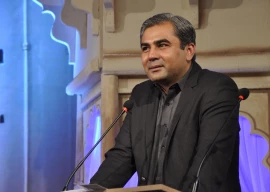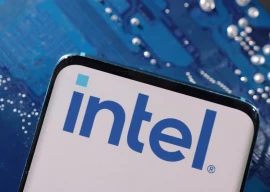
Effects of moisture, dirt and rain on solar panels, besides the likelihood of their batteries running down earlier than expected, discourage people from investing in clean energy sources, which require substantial initial investment in most cases, they add.
“People need to understand that solar panels aren’t off-the-shelf items. The solar technology is an ‘engineered solution,’ whose capacity must be in accordance with the expected load,” said Shaaf Mehboob, Director of Green Center, a Karachi-based company that offers energy efficient solutions to industrial, commercial and residential customers by doing energy audits and selling energy management equipment.
The alternative energy sector in Pakistan is completely unregulated, says Mehboob. “You don’t need a certification or approval from any government body to set up an alternative energy company. No inspector from a government authority will ever pay you a visit to check the quality of your products and services.”
The lack of supervision and quality control, he says, has resulted in customers losing trust in the solar technology.
He adds that it is the lack of regulation that solar panels of poor quality are being sold in Pakistan. A good quality, Korea-made solar panel can cost up to Rs400 per watt.
Although such panels have an average life of 20 years, Mehboob says their performance also depends on the number of hours they are used every day. The average life of a battery used in solar panels is four years.
The cost of electricity produced by solar panels is under Rs10 per unit in the long run, which is lower than the rate of electricity supplied by the national grid if the expenses incurred on petrol/diesel to run standby generators during power load-shedding are taken into account.
Solar panels are part of the clean energy solution that Green Center offers its customers after conducting an energy audit of their house, office or factory. A typical energy audit includes – but is not limited to – low energy air-conditioning solutions, installation of light-emitting diode (LED), energy-saving lights and lamps, occupancy censors and replacement of inefficient appliances.
Green Center’s engineers use the design of the place and come up with a most efficient clean energy plan with the help of computer software.
For example, according to an energy audit Mehboob recently conducted for a residential unit, a one-time investment of Rs290,000 in clean energy was likely to result in annual savings of at least Rs150,000 in coming years.
Efficient air-conditioning units that Green Center imports from Malaysia, for instance, consume 40% less electricity than ordinary units being sold in Pakistan. Their prices are twice that of ordinary air-conditioning units, says Mehboob, but the initial investment pays off within a short time.
Mehboob says 75% of his customers in the solar water heater segment are from the household sector. In air-conditioning and efficient lighting segments, household customers are 50% and 40%, respectively.
“It’s not Europe where people switch to alternative energy for environmental considerations. Here, people install solar panels mainly because of their cost-effectiveness,” he said, adding that prices of solar panels in the international market have dropped by over 50% in the last few years.
Published in The Express Tribune, April 5th, 2012.
COMMENTS (3)
Comments are moderated and generally will be posted if they are on-topic and not abusive.
For more information, please see our Comments FAQ
































1714024018-0/ModiLara-(1)1714024018-0-270x192.webp)









How many people can afford 290,000 in a poor country where people are committing suicides because they cant afford the food.? The ones can afford they have enough money to pay their power bills. If Pakistan want to excel in solar power then it has to have a national approach. People and the govt working together to solve the energy crises. For example instead using batteries, use the nation grid and sell the excess power back to the power company during the day. And during night use the grid power. you can produce the power shortage by 100% in 2 years. Dont believe me then do the numbers.
Battery charged cars and solar elect is failure of the century,,,,